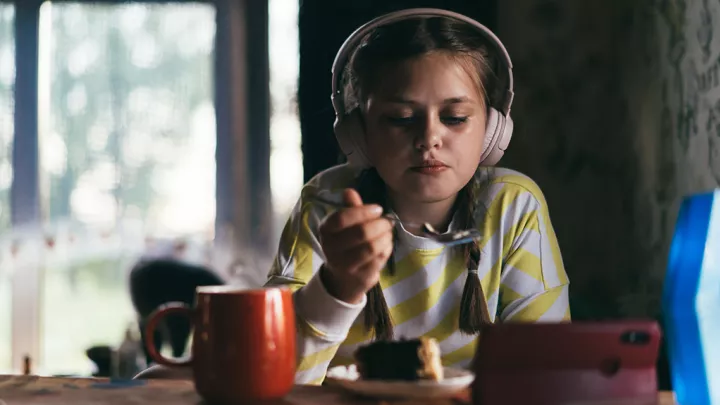Children’s Hospital Los Angeles Researchers Find That a Standard Biomarker Can Measure the Impact of Early Development Disparities in Infants
LOS ANGELES (January 23, 2024) ─ While multiple studies have shown a relationship between adversity in early childhood and negative lifelong health effects on groups of people, no reliable measures exist to measure the impact of early adversity on the risk of individual children. A joint exploratory study conducted by researchers at Children’s Hospital Los Angeles and Boston Children’s Hospital found that a standard biomarker could predict the risk of early toxic stress on the cognitive development and overall health of individual infants. Their findings were published in PLOS Global Public Health.
Toxic stress is a prolonged, repeated and harmful overactivation of the body’s stress response. It literally can imprint itself on the body. An overload of toxic stress can disrupt and damage cell function. That can be caused by several factors, including adversity.
The groundbreaking Adverse Childhood Experiences (ACEs) study as well as several subsequent studies connected adversity— (psychological, physical or sexual abuse, parental violence, exposure to substance abuse, mentally ill or imprisoned household members) occurring in childhood as recalled by the adult—that is associated on average, with adult health-risk behaviors, chronic illness and shorter life span in a large population group. More recent studies showed that high ACE scores in individuals did not necessarily predict worse disease risk later in life, as some may be more resilient and others more susceptible.
In children, studies have shown that early exposure to adversity-caused stressors can disrupt cognitive development, hormones and the immune system. But these studies also showed that the impacts of early adversity can be prevented by reducing the sources of stress, as well as buffered by building supportive relationships between children and their caregivers along with learning life and coping skills.
Measuring the toll of toxic stress

In this study, the researchers investigated if a standard biomarker could measure the effects of toxic stress stemming from adversity on mothers and their infants. The researchers measured levels of F2-isoprostane, a sensitive chemical biomarker that indicates cell disruption and damage from oxidative stress, in samples of blood from mothers and urine from infants. Oxidative stress occurs when cells cannot properly process their waste products, known as free radicals, produced as the body processes food or reacts to environmental factors.
The researchers wanted to know if F2-isoprostane—which has been previously used to reliably measure the effects of oxidative stress in adults—could be used to measure the impact of stressors from adversity and connect these effects to the early development and neurocognitive outcomes of infants.
“In this exploratory study, we aimed to evaluate the individual effects from adversity experienced around the time of birth,” says Kameelah Gateau, MD, MS, neonatologist at Children’s Hospital Los Angeles and lead study author. “We found a measure of the biological signature of toxic stress on infant brain development, something that no previous study has yet managed to accomplish. We believe that this sensitive and objective biomarker shows great promise in detecting how toxic stress affects the bodies and brains of children.”
Study results
Statistical analysis found that cumulative risk scores were correlated with higher F2-isoprostane levels in mothers and infants after six months in the study. The infants who had higher levels of this biomarker of damage from toxic stress at their two-month study visit were more likely to have lower scores on a standard test of child cognitive development when they were a year old.
The team also found that higher cumulative risk scores predicted a higher average level of the toxic-stress biomarker in the bodies of mothers during the one-year study. The researchers suggested that the relationship between cumulative risk scores around the time of birth and higher maternal and infant stress biomarker levels at six months may reflect oxidative stress levels. The researchers also believe that this initial six-month window of development could be an optimal window of time that can reveal the physical impacts of early adversity in the body and brain.
Stress affects small bodies
The study, conducted at Children’s Hospital Los Angeles and Boston Children’s Hospital, followed 116 pairs of mothers and their infants under 2 months old and born after 36 weeks of gestation. The mothers were assessed using a risk score composed of maternal mental health and demographic information including education, marital status and income. The researchers checked infant development at 6 and 12 months, measuring the levels of oxidative stress biomarker in samples of blood from mothers and urine from babies. About 80% of the children in the study in Los Angeles identified as White or Latino, and in the Boston group about half identified as Black.
“The infants who had higher measures of biological stress when measured with this biomarker did worse on this learning test,” says Pat Levitt, PhD, Chief Scientific Officer at CHLA and study senior author. “This could mean that the infants who had higher stress levels do worse on learning and retention. These effects are already appearing in 2-month-old infants but are even more apparent at the 6-month mark.”
Other study co-authors were Lisa Schlueter, PhD, of Children’s Hospital Los Angeles; Lara J. Pierce, PhD, of York University; Barbara Thompson, PhD, of Michigan State University; Alma Gharib, PhD, and Ramon A. Durazo-Arvizu, PhD, of CHLA; and Charles A. Nelson, PhD, of Boston Children’s Hospital.
About Children's Hospital Los Angeles
Children’s Hospital Los Angeles is at the forefront of pediatric medicine, offering acclaimed care to children from across the world, the country and the greater Southern California region. Founded in 1901, Children’s Hospital Los Angeles is the largest provider of care for children in Los Angeles County, the No. 1 pediatric hospital in California and the Pacific region, and is consistently ranked in the top 10 in the nation on U.S. News & World Report’s Honor Roll of Best Children’s Hospitals. Clinical expertise spans the pediatric care continuum for newborns to young adults, from everyday preventive medicine to the most medically complex cases. Inclusive, compassionate, child- and family-friendly clinical care is led by physicians who are faculty members of the Keck School of Medicine of USC. Physicians translate the new discoveries, treatments and cures proven through the work of scientists in The Saban Research Institute of Children’s Hospital Los Angeles—among the top 10 children’s hospitals for National Institutes of Health funding—to bring answers to families faster. The hospital also is home to one of the largest training programs for pediatricians in the United States. To learn more, follow us on Facebook, Instagram, LinkedIn, YouTube and Twitter, and visit our blog at CHLA.org/blog.


